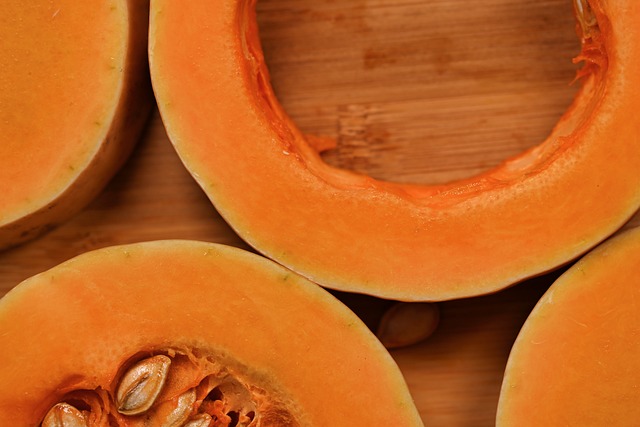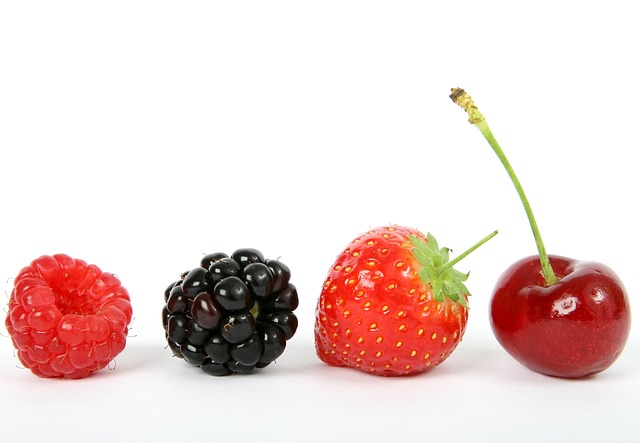The fruitarian diet is a subtype of the vegan diet that involves eating largely (or all) fruit. Raw fruit accounts for 50% to 75% of the items consumed on a fruitarian diet. Despite the nutritional value of most fruits, this is one of the most restricted eating patterns available, and the danger of malnourishment is significant.
The reasons for following a fruitarian diet vary, but key motivators are assumed to include health and/or religious, moral, or ethical grounds. The fruitarian diet is not recommended by health and nutrition experts since it restricts other good food groups, which can lead to vitamin shortages.
What Are Your Options?
To be a fruitarian, you must consume at least half of your calories from raw fruit such as bananas, papayas, grapes, apples, and berries. The remaining 25% to 50% of calories are often obtained from nuts, seeds, veggies, and whole grains. Strict fruitarians, on the other hand, can consume up to 90% fruit and only 10% nuts and seeds.
The fruitarian diet is typically centered on the following seven fruit groups:
- Acid Fruits: Citrus, cranberries, and pineapples
- Fruits with low acidity: Cherries, raspberries, and figs
- Bananas, grapes, and melons are examples of sweet fruits.
- Avocados, coconuts, and olives are examples of oily fruits.
- Fruits of vegetables: peppers, tomatoes, cucumbers, and squash
- Nuts: Hazelnuts, cashews, almonds, pistachios, and walnuts
- Seeds: Sunflower, Pumpkin, and Squash Seeds


What you need to know
Many supporters of the fruitarian diet, like those of the paleo diet, describe the eating plan as the original diet of humanity. Some fruit eaters are motivated by a desire to not destroy any living entity, including plants, which is why they solely consume plant fruit.
A fruitarian diet does not have any set meal times. The diet really encourages you to eat intuitively—that is, only when you are hungry. With the fruitarian diet, there are no hard and fast guidelines on how much to eat. One advantage of intuitive eating is that you can follow your hunger cues.
There are numerous methods to tweak the fruitarian diet to make it healthier. For example, you might follow a fruit-based diet while still including other important food groups like whole grains and protein.
A fruitarian diet that has been changed might look like this:
- 50% fruit
- 20% protein derived from plants (e.g., tempeh, soy, seitan)
- 20% fruits and veggies
- 10% whole grains (e.g., oats, wheat, bulgur, quinoa, etc.)
Including additional foods in the fruitarian diet improves nutritional content and reduces the risk of nutrient deficits and health issues.
Unfortunately, there isn’t a lot of trustworthy information on the fruitarian diet. Because the diet is so specific and stringent, research on it is scarce. Most fruit studies focus on the antioxidant capabilities or other particular health advantages of the fruit rather than the long-term impacts of a fruit-based diet.
What Fruit to Eat
A fruitarian diet emphasizes the consumption of a wide range of fruits, including exotic varieties such as rambutan, mangosteen, passionfruit, jackfruit, durian, longan, and snake fruit.
Of course, typical fruits like bananas, pears, apples, oranges, and berries are advised as well. Fruit also includes foods that we don’t normally consider fruits, such as tomatoes, cucumbers, peppers, avocados, squashes, and olives. Botanically, all of these are fruits.
- Seeds and nuts Because nuts and seeds are technically part of plant fruits, fruitarians supplement their meals with foods like pepitas, sunflower seeds, walnuts, and almonds. They can contribute protein and lipids.
- Some vegetables It is not suggested that someone consume only fruits. Many fruitarians eat vegetables, primarily leafy greens.
- Beverages Fruitarians can hydrate themselves with coconut water, fresh fruit juices, and water. Coffee is permitted, depending on personal preference.
What Not to Eat
- Animal Protein A fruitarian consumes no animal protein. Fruitarians cannot eat eggs, chicken, pig, or beef.
- Milk and dairy products Dairy products, like animal protein, are not permitted on the fruitarian diet. No milk, yogurt, cheese, or other animal dairy products are permitted. Some fruitarians substitute almond, cashew, or coconut milk for cow or goat milk.
- GrainsGrains and grain products, including sprouted grain products, are not permitted on the fruitarian diet.
- Starches Potatoes may appear to be tolerated on the fruitarian diet, but this is not the case. Fruitarians do not consume any tuber or potato.
- Legumes and beans A real fruitarian diet excludes beans and legumes such as chickpeas, lentils, peas, soybeans, and peanuts.
- Foods that have been processed The fruitarian diet forbids the consumption of processed foods. This implies only shopping along the perimeter of your supermarket or at your local farmers’ market.
Advantages and disadvantages
Pros
- Encourages the consumption of complete, nutritious foods
- Aids in hydration
- Excellent for satiation

Cons
- Nutrient deficiency risk
- Health issues are possible.
- Restrictive
- It is possible that this will encourage tooth decay.
While the fruitarian diet has certain nutritional benefits, it also has some major problems.
Because fruits are often low in fat and high in water, you can eat a lot of them for a low-calorie intake. To achieve your calorie requirements on a fruit-based diet, you would need to consume huge amounts of food, effectively promoting satiety.
Fruits include many nutrients, but they do not contain all of the components required for a healthy, balanced diet. The fruitarian diet is very limited. Eating mainly or largely fruit might get monotonous and cause a desire for other foods.
Is the Fruitarian Diet a Good Option for You?
The fruitarian diet is distinct from most other diets. While some diets incorporate pre-packaged foods or focus on specific food groups, the fruitarian diet focuses on just one.
For a healthy, balanced diet, the USDA (United States Department of Agriculture) 2020-2025 Dietary Guidelines for Americans recommends ingesting a variety of fruits, vegetables, grains, dairy products, and protein each day.
The following are the important suggestions in the federal guidelines:
- Dark Vegetables, leafy greens, scarlet and orange kinds, legumes (beans and peas), starchy, and others
- Fruits, particularly whole fruits
- Grains, with at least half of them being whole grains
- Dairy products like milk, yogurt, cheese, and/or fortified soy beverages
- Good sources of protein like seafood, lean meats and poultry, eggs, legumes, nuts, seeds, and soy products.
- Oils that are healthy for you
- Limited items are saturated fats, trans fats, added sugars, and sodium.
Most of these dietary requirements are not met by the fruitarian diet. While it is considered healthful to fill half of your plate with fruits and vegetables and avoid saturated fats, trans fats, added sugars, and sodium, the fruitarian diet lacks vegetables, grains, dairy, protein, and oils.
Whether your aim is to lose, maintain, or gain weight, knowing how many calories you should consume each day is critical. Most people require approximately 1,500 calories per day for weight loss, 2,000 calories per day for weight management, and 500 calories per day for weight growth. This amount, of course, changes depending on age, gender, body shape, level of physical activity, and other things.
Health Advantages
Fruits are well-known for their health benefits, which include a high antioxidant content as well as a high concentration of vitamins, minerals, electrolytes, phytonutrients, and fiber. Fruit’s high fiber content induces satiety, which may result in weight loss. Fruit can also help you stay hydrated.
Health Dangers
Despite their nutritional value, whole fruits should not be consumed at the expense of other dietary categories.
Deficiencies in Nutrients
Our bodies require protein and fat, two macronutrients that a fruitarian diet may not provide enough of.
Furthermore, eliminating grains puts you at risk for vitamin B inadequacies, limiting dairy and vegetables puts you in danger of calcium insufficiency, and avoiding animal products puts you at risk for vitamin B-12 deficiency.

Micronutrient deficiencies can result in consequences such as anemia, tiredness, immunological diseases, and osteoporosis.
Health Complications Risk
The fruitarian diet carries a high risk of health issues. A fruitarian diet can be risky for persons who have diabetes or prediabetes since eating a lot of fruit can elevate blood sugar levels and decrease insulin sensitivity.
A fruit-based diet can also be harmful to persons who have a pancreas or kidney disease. Strict fruitarians may even mistakenly starve themselves into severe ketoacidosis in some situations.
To Conclude
While fruits supply nutrients, the fruitarian diet is unlikely to give all of the nutrition your body requires. A fruitarian diet is deficient in protein, good fats, and veggies, all of which are essential for overall health and optimal body function.
A fruit-based diet can also generate strong desires for other foods, which can lead to binging or other forms of disordered eating. Before embarking on a fruitarian diet, consult with your doctor or a trained dietician. A health professional can assist you in developing the ideal eating plan for you.
While we do not support fad diets or unsustainable weight loss approaches, we do give the facts so that you can make an informed decision that best suits your nutritional needs, genetic blueprint, budget, and goals.
Exercise, sleep, and other lifestyle factors all have a significant impact on your overall health. The best diet is one that is well-balanced and fits your lifestyle.
